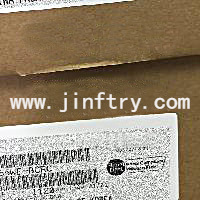413N2470DQ00M Product Introduction:
KEMET Part Number 413N2470DQ00M(Film Capacitors), developed and manufactured by KEMET, distributed globally by Jinftry. We distribute various electronic components from world-renowned brands and provide one-stop services, making us a trusted global electronic component distributor.
413N2470DQ00M is one of the part numbers distributed by Jinftry, and you can learn about its specifications/configurations, package/case, Datasheet, and other information here. Electronic components are affected by supply and demand, and prices fluctuate frequently. If you have a demand, please do not hesitate to send us an RFQ or email us immediately sales@jinftry.com Please inquire about the real-time unit price, Data Code, Lead time, payment terms, and any other information you would like to know. We will do our best to provide you with a quotation and reply as soon as possible.
Film capacitors are capacitors that use thin film materials as dielectric. This structure mainly consists of two layers of conductive metal foil, sandwiched with a thin film medium, which is usually made of polymer materials such as polyether esters, polypropylene, or polystyrene. The design principle is based on the storage of charges. When voltage is applied to both ends of the capacitor, positive and negative charges accumulate on two layers of metal foil, forming an electric field. Thin film capacitors are renowned for their high stability, low loss factor, and wide operating temperature range, and are particularly suitable for high-frequency circuits. In addition, due to its good self-healing ability, which can self recover after partial breakdown in the dielectric, it has a long service life and high reliability.
Application
Film capacitors are mainly used in multiple industries such as electronics, communication, automotive electronics, and medical equipment. In power electronics equipment, they are widely used in DC link filtering, power supply stabilization, and motor drive circuits to ensure smooth current and stable voltage. In audio devices such as speaker crossover networks, preamplifiers, and power amplifiers, thin film capacitors are favored for their excellent frequency response and low distortion characteristics, which help improve sound quality performance. In addition, thin film capacitors are often used in signal processing and filtering in communication systems, which can effectively remove noise in the signal and improve transmission quality. In the field of automotive electronics, thin film capacitors are used in engine management systems, airbag circuits, and in car entertainment systems to ensure circuit stability and safety. In medical equipment, such as electrocardiogram monitors and pacemakers, the high precision and stability of thin film capacitors make them key components that play an important role in monitoring and treating the health of patients.
FAQ about Film Capacitors
-
1. Are film capacitors better than electrolytic capacitors?
Not necessarily
Film capacitors and electrolytic capacitors each have their own advantages and disadvantages, and the specific choice depends on the application scenario.
Advantages of film capacitors
Non-polarity: Film capacitors are non-polar, and there is no need to distinguish between positive and negative poles, avoiding the risk of capacitor explosion due to reverse connection.
Long life: Film capacitors have significantly longer life and better stability.
Wide temperature range: Film capacitors have a wide operating temperature range, generally -40℃~+105℃/110℃, suitable for various ambient temperatures.
High withstand voltage: Film capacitors can withstand overvoltages higher than 1.5 times the rated voltage in a short period of time, and have strong withstand voltage.
Low loss: Film capacitors have low loss and are suitable for high-frequency circuits, especially for occasions requiring low loss and high-frequency applications.
Advantages of electrolytic capacitors
Large capacity: Electrolytic capacitors usually have large capacitance and are suitable for occasions requiring large amounts of energy storage.
Low cost: The cost of electrolytic capacitors is relatively low, suitable for occasions with strict cost requirements.
High energy density: Electrolytic capacitors are a strong choice when cost-effective, high-capacity energy storage is required, especially when maintaining DC output voltage during power outages.
-
2. Will the performance of film capacitors degrade?
Yes
The performance of film capacitors will degrade. The performance degradation of film capacitors is mainly due to their internal structure and material properties.
Reasons for performance degradation
Metal plating oxidation: During the capacitor manufacturing process, there is a trace amount of air between the film layers, which may be ionized under the action of the electric field to produce ozone. Ozone is a strong oxidant that oxidizes the metal plating to produce non-conductive metal oxides, resulting in a reduction in the plate area and a decrease in the capacitor capacity.
Humid air: During the winding process of film capacitors, if the workshop environment is not properly controlled, there will be a large amount of humid air. These humid air will produce air ionization reactions when the capacitor is working, generating ozone, which further causes the capacitor capacity to decay.
Poor quality materials: The film materials used are of poor quality, such as uneven evaporation and defects on the film, which will cause the capacitor capacity to decay.
-
3. What are the alternatives to film capacitors?
CL21 capacitors, MPB capacitors, CBB13, CBB81, MMKP82 capacitors
Alternatives to film capacitors mainly include CL21 capacitors, MPB capacitors, CBB13, CBB81 and MMKP82 capacitors. These alternatives have their own advantages and disadvantages in performance and applicable scenarios, and the specific choice depends on specific needs.
CL21 capacitors
CL21 capacitors and CBB22 capacitors can replace each other in applications such as filtering. CL21 capacitors are more stable than CBB22 capacitors under high-frequency conditions, so CL21 capacitors are more preferred in high-frequency circuits. However, CL21 capacitors are more expensive and perform better in high-frequency circuits.
MPB capacitors
MPB capacitors are boxed metallized polypropylene film capacitors with the same core as CBB22 capacitors, but with a plastic shell, which has better resistance to high temperature, moisture and sealing performance. MPB capacitors can replace CBB22 capacitors in high frequency, DC, AC and pulse high current applications, but their prices are relatively high.
CBB13, CBB81 and MMKP82 capacitors
These capacitors have a higher voltage resistance, up to 3000V, and are suitable for applications requiring higher voltages. However, they are also relatively expensive and larger in size.
 Lead free / RoHS Compliant
Lead free / RoHS Compliant

























